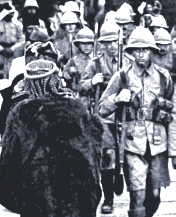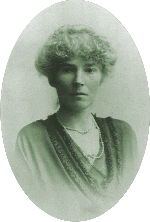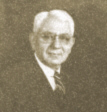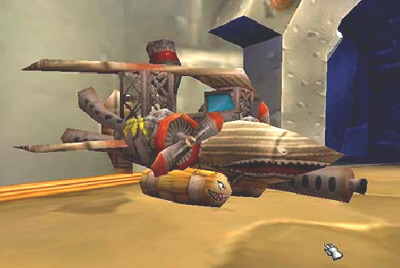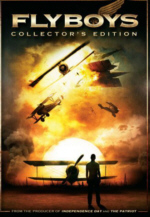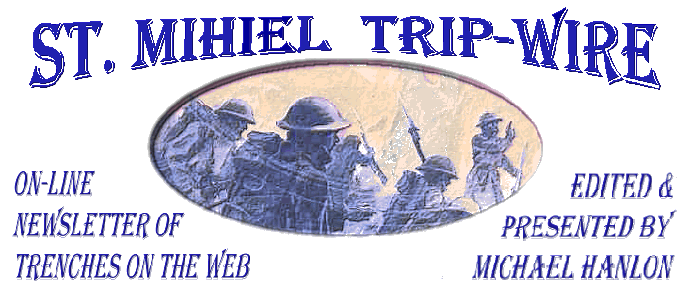
February 2007 |
Access Archives |
TRENCH REPORT: Thanks very much to the 71 of you who have subscribed to our new First World War Magazine, Over the Top. Our next issue on the Battle of Passchendaele is almost ready, and we are busy programming future issues. You may be happy to learn that through the work of Assistant Editor Kimball Worcester, we have acquired the rights for publishing a WWI short story by that master of Noir & the Hard-boiled James M. Cain, author of The Postman Always Rings Twice and a veteran of the 79th Lorraine Division of the AEF. Information is accessible via our icon at the bottom of Page One if you would like start receiving Over the Top. . .Speaking of Passchendaele, correspondent Charlotte des Camps, Proprietoress of Varlet Farm and B&B, site of fighting in 1917 [captured late in the battle by the Royal Naval Division], will be sending us updates on the 90th Anniversary Commemorations. MH
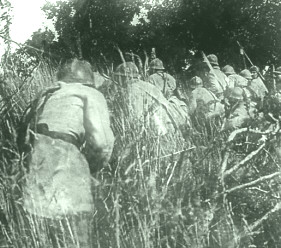 French Troops Poised to Attack |
|||||||||||||||||||||||
New at Our Own & Our Friends' Great War WebsitesClick on Title to Access | |
New
|
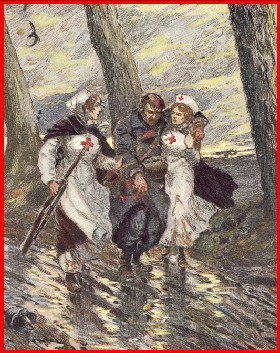
Cover illustration from Nurse Helen Fairchild by Nelle Rote. See "Media Events" for details.

The success of the British Army in the Battle of Amiens on August 8, 1918 was helped by one of the great deceptions of WWI. The presence of a substantial Canadian force of four divisions in the sector was hidden from German intelligence. A skeletal Canadian force was deployed conspicuously in the Ypres Salient, and a flow of false radio signals was transmitted to suggest that the Canadian Corps was building up in the Calais region. The well-disguised Canadians, with the ANZACs, would be the key attacking units in the battle.
|
Sappers at Work: A Canadian Tunnelling Company By David Bomberg, 1919 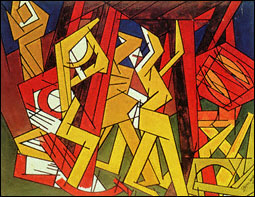
|
GREAT WAR 2007 EVENT CALENDAR | |
|
League of World War I Aviation Historians May 11-12, 2007 Holiday Inn Rosslyn in Arlington, VA (link) | |
|
Palestine Campaign International Conference September 3-6, 2007 Tel-Hai Academic College in Upper Galilee, Israel (email for details) | |
|
Each Other For WFA-USA 18th National Seminar September 7-9, 2007 Naval War College Newport, RI (Full Program) | |
|
The Huntington Library, October 5-6, 2007 San Marino, California (email for info.) | |
|
International Conference October 18-20, 2007 Georgetown University, Wash. D.C. (link) | |
|
US Branch Chapter Meetings Check for Your Region Regularly Updated (details) | |
|
Berkeley, San Francisco and Palo Alto, CA Regularly Updated (details) | |
|
Email Response |
|
|
After a successful run in London, R.C. Sherriff's Journey's End arrives on Broadway at the Belasco Theatre for a limited engagement beginning February 8. It stars three-time Tony Award winner Boyd Gaines, Jefferson Mays and Hugh Dancy.
The paperback edition of David Traxel's book Crusader Nation: The United States in Peace and the Great War, 1898-1920 has just been brought out by Vintage. The hardback was published last year by Knopf.
Our friend and Trip-Wire contributor Nelle Rote [pronounced "Nell"] of Lewisburg, PA has just published a book about her aunt, Nurse Helen Fairchild: World War One. Helen was a true First Responder and died tragically in service. She is buried overseas in the Somme American Military Cemetery, France. The story of Helen doing her duty as a surgical nurse is 400 pages with 300 photos and illustrations. The book can be ordered directly from Nelle. (email to order.)
If this new book is as good as its first review, it will be a classic. Learn about TIP & RUN: The Untold Tragedy of the Great War in Africa by Edward Paice through novelist William Boyd's review. (link)
On May 12th the Imperial War Museum will be offering lectures by T.E. Lawrence scholars Jeremy Wilson and Dennis Silk.

Whatever you do, you lose a lot of men.
General Charles Mangin

Crest of Montfaucon, Argonne Forest, 1919
Captured September 27, 1918 by 79th Division, U.S. First Army

Rene Riffaud died January 16th at age 108, leaving just three known French survivors of the 1914-1918 conflict. (link)
Albert F. "Jud" Wagner, who served with the U.S. Marines in World War I, has died at the age of 107. (link)
 |
Sleeping Beauties of
the Western Front #2
By Christina Holstein
Welcome to my second Sleeping Beauty! This fort, on military ground and inaccessible to the general public, is one of 28 forts around Verdun. It is of the intermediary, or secondary, category, in contrast to major installations like Douaumont. It is little damaged but completely overgrown. Originally built of limestone, it was partially modernised later to keep pace with the developments that took place in explosives and artillery during the 1880s. Further additions to it were made after the Battle of Verdun when the Pamard gun turrets were added. The masonry is beautiful, and the vaulted roof of the ravelin is worthy of a cathedral.
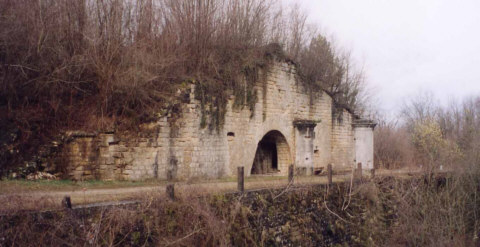
Ravelin

Central Courtyard
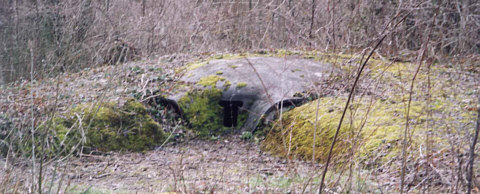
Pamard Turret

Outer Ditch
In the spring of 1915, the creation and promotion of marraines de guerre [war godmothers] transformed letter-writing from personal support of loved ones into an act of patriotism. The scheme originated in the press and was carried on in its pages. Barrès in L'Echo de Paris touted the Soldier's Family, a charity founded by Mlle. de Lens; L'Homme enchainé publicized a similar effort organized by Clemenceau's daughter, Mme. Jaquemaire. Le Journal then started its own organization for the "adoption" of prisoners of war, while other papers and magazines opened their classified columns to ads from soldiers seeking marraines. The marraines de guerre were a peculiarly French creation without close parallels in Britain or Germany. Read Margaret Darrow's article for more on this phenomenon. (link) |


Volunteers Meeting a French Troop Train
 |
1917 on The Western Front | |
|
From his promotion to command of the French Army in December 1916, Robert Nivelle had been planning for an attack of "brutality and violence" along a 50-mile stretch of the front in the Reims and Chemin des Dames area, which he was adamant would break through the German lines and bring about an end to the war. His excellent English, manners and air of confidence made him an immediate favourite with British Prime Minster Lloyd George, who was captivated by the man, in preference to the dour Haig, whom he did not trust. Lloyd George even wanted to put Nivelle in charge of Haig and the British Army. Haig did not trust Nivelle, and this idea was not carried through! Nivelle designed his onslaught to commence on April 16th. His planning security was appalling. The Germans learnt of it long before April, and in any case, from February, were withdrawing to the Hindenburg line, which effectively removed some of the area against which Nivelle wished to launch his attack. Nivelle refused the advice of his three generals in charge of the attacking armies to alter the overall plan or, at the very least, to take cognizance of the necessary changes they deemed necessary. This extending disagreement reached into the French war cabinet and to the president of France. Called back to Paris by the politicians for yet another cross examination, Nivelle threatened to resign only a few days before the start of the offensive -- if they didn't trust him -- and suddenly the politicians realised they couldn't let him resign, since such a situation would ruin the morale of the nation. |
With heavy hearts they agreed to let the offensive start; Nivelle for his part agreed to stop it if it was seen to be unsuccessful after 48 hours. This was obviously not possible but the politicians had to accept. 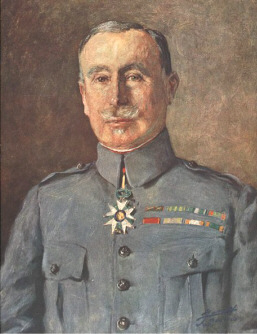 Gen. Robert NivelleNot knowing these continuing French politics at the highest level, Haig agreed to unleash his four division Canadian offensive against Vimy Ridge at Easter in support of the (floundering) Nivelle plan and as a diversion for the French offensive due to begin the next week round Reims. This successful Vimy attack was a preliminary to the Battle of Arras commencing a week later and starting on the same day as the Nivelle Offensive. | ||
|
|
|||
| |||

|
An Enlisted Man's View27th Division, AEF |
After service in the war with the New York National Guard, Raeburn Van Buren became a noted cartoonist, a collaborator with Al Capp, and the originator of "Abbie & Slats". His humorous drawings from the war reflect the put-upon, underdog attitudes of the enlisted man. Here are two examples from the magazine of the 27th Division, Gas Attack:
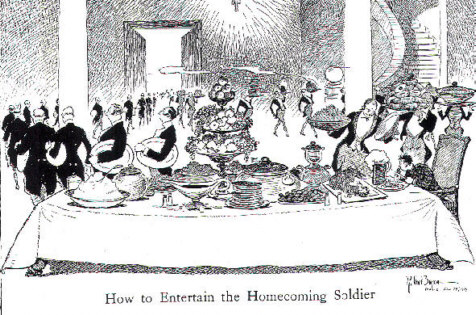

Click Here for News on Travel Opportunities |
Never is that necessity for isolation more evident than in the reaction of the local villagers to the unauthorized visit of two patients looking for the pub. This event became the reason to create masks for the most sorely injured in order to ease them back into society. Enter Julian, a soldier suffering from a severe facial wound, who becomes the primary subject of the experiment for the artist and the doctors. Unable to repair the awful damage to his face, Drs. McCleary and Kazanjian prevail upon Anna to create a mask to conceal that which is irreparable. The mask is to replicate skin tones that only an artist can capture.
As minor characters move in and out, one sees Brownlow, the anesthetist, in the throes of ether addiction. Dr. McLeary's request of him to save the house boy, Artis, from service ends in dreadful completion. A dream is shattered, but a life is saved. The First World War's toll on the men who fought it and the collateral damage to civilians is portrayed brilliantly and lyrically in Ms. Shields's study of this segment of the war that began all wars. Little, Brown & Company, New York, Boston, & London, ISBN-10:-31678528-8 |
|
in the 21st Century |
On February 6th, All Quiet On The Western Front ($14.98) will be released by Universal in their Cinema Classics series. This title was previously back in 2003 with a running time of 130 minutes. It's possible this new release has been remastered with additional footage. It's now listed with a running time of 132 minutes, but the extra 2 minutes may be accounted for by Robert Osborne's introduction. The bonus materials for this new release include the Osborne introduction and the theatrical trailer. The previous release included production notes, cast & filmmaker's bios, and the theatrical trailer. And now for something completely different- on February 20th, Fox Home Entertainment is releasing Voyage To The Bottom Of The Sea: Season Two, Volume Two ($29.98). The second season of this popular television was the first to be broadcast in color. This 3-disc collection includes 13 episodes from the second season. Bonus features include an interview with actor David Hedison (Captain Lee B. Crane) and a photo gallery. This set includes "The Phantom Strikes" and "The Return of the Phantom", 2 episodes that have the nuclear submarine SSRN Seaview menaced by the spirit of a World War One U-boat Captain.  On March 27th, Warner Home Video will release Errol Flynn: The Signature Collection Volume 2 ($49.92). The films included are Adventures Of Don Juan, The Charge Of The Light Brigade, The Dawn Patrol, Dive Bomber and Gentleman Jim. The Dawn Patrol ($19.97) will include a Warner Night at the Movies 1938 short subjects gallery of a vintage newsreel, the musical shorts "The Prisoner of Swing" and "Romance Road," a classic cartoon "What Price Porky?", and trailers of The Dawn Patrol and 1938's Four's A Crowd. James Cagney: The Signature Collection ($49.92) appears on April 24th from Warner Home Video. It includes The Bride Came C.O.D., Captains Of The Clouds, The Fighting 69th, Torrid Zone, and The West Point Story. The Fighting 69th's special features include a Warner Night at the Movies 1940 short subjects gallery of a vintage newsreel, two patriotic shorts "Young America Flies" and "London Can Take It", 2 classic cartoons "Pilgrim Porky" and "The Fighting 69½th", trailers for The Fighting 69th and Brother Orchid, and a radio adaptation with Pat O'Brien, Robert Preston and Ralph Bellamy. Captains Of The Clouds, a Technicolor aviation adventure, is a story of bush pilots joining the Royal Canadian Air Force during World War II and has a cameo appearance by Billy Bishop. Finally, watch for Roger Corman's Von Richthofen And Brown ($14.98) from MGM also on April 24th Andrew Melomet, Proprietor of Andy's Nickelodeon will answer your Great War film or video inquiry. He is also soliciting your recommendations for the WWI Filmography he is compiling for our readers. Just click HERE. |
| The following are thanked for their contributions to this issue of the Trip-Wire: Anne Steele, Tom Gudmestad, Frank Jordan, Pete Guthrie, Doug Mastriano, Donna Cunningham, Sidney Clark, Tony Langley, Christina Holstein, Tony Noyes, Esther MacCallum-Stewart, Andy Melomet, Kimball Worcester, and Len Shurtleff. Raeburn Van Buren was the great uncle of WWI author Stephen Harris who has made those wonderful cartoons available. The photo of Montfaucon is from the Library of Congress. The information on Gertrude Bell was found at the Gertrude Bell Project. Until next month, your editor, Mike Hanlon. | SUBSCRIBE TO THE TRIP-WIRE (Or Send it to a friend.) (Or send us a comment on the TRIP-WIRE) CLICK HERE TO CONTACT US VIA EMAIL |
For further information on the events of 1914-1918
and membership information visit the Directory Pages of:
|

